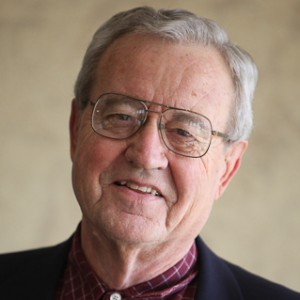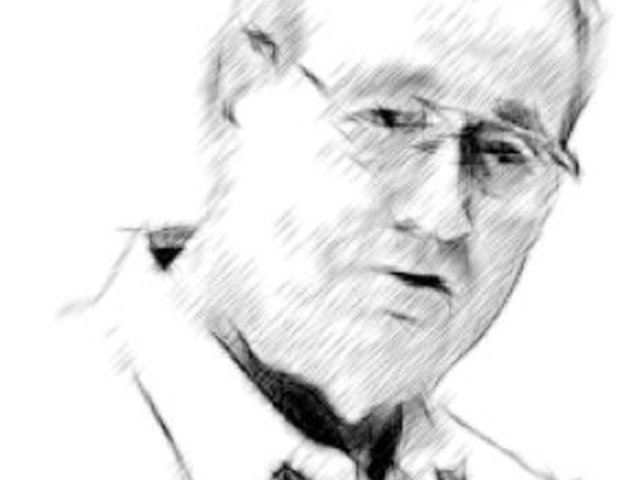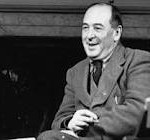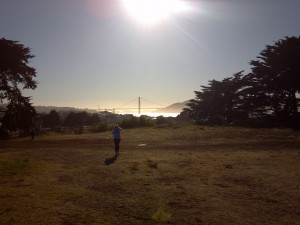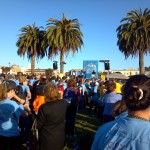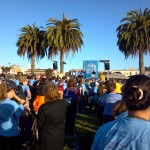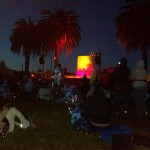 It had been a long week. It was only Tuesday, but I had already had several days that seemed like nothing was going my way. As one who encourages others to live the “Good Life,” I feel especially compelled to make changes in my attitude or setting when I’m having a bad day. On this particular night, I was in great need of something to change the downward spiral of my luck and emotions.
It had been a long week. It was only Tuesday, but I had already had several days that seemed like nothing was going my way. As one who encourages others to live the “Good Life,” I feel especially compelled to make changes in my attitude or setting when I’m having a bad day. On this particular night, I was in great need of something to change the downward spiral of my luck and emotions.
Going on a long run has always been something that relieves stress and helps me feel better. So, I called up a friend and asked him if he wanted to run with me the next day.
Over the course of the run, we talked about how spending time outdoors helped us both to realize what the Good Life is about. My friend, who is a native of California, told me that I was in the right part of the world to enjoy nature. In particular, for runners like myself, there were hundreds of scenic races and marathons that occur throughout the year. He even recalled that there was a great marathon in Lake Tahoe that weekend.
The more we talked about running in scenic places, the more I wanted to get away that weekend. So, on the day before the race I convinced myself that the Good Life encompasses doing spontaneously things like taking a day off work to drive 200 miles to run a marathon. Since I did not train for this marathon, I had no goals for the race, except to take time to enjoy the spectacular scenery of Lake Tahoe.
The Emerald Bay Marathon at Tahoe
The marathon that Friday certainly lived up to my expectations. The race started at a beautiful area called Inspiration Point. We were certainly inspired by viewing a sunrise over the lake just before the start gun of the race.
For the first five miles, I was able to stretch out my legs and let gravity take me down a scenic bike path around the portion of the lake called Emerald Bay, aptly named for the reflection of the evergreen trees on the lake’s surface. After this stretch of beautiful scenery, I hit a flat stretch of hotels and restaurants into the state of Nevada. To keep my mind off the fact that I still had 21 miles left to run, I started a conversation with a fellow runner who was keeping at my pace just behind me.
“What time to you hope to finish in?” I asked, trying not to lose breath with long sentences.
“I usually finish around three hours and ten minutes,” said this tall runner who had a muscular frame compared to other marathoners. “But I may go a little easier since I’m running the two other marathons this weekend.”
Before hearing his response, I was feeling good about myself that I was running in 5th place in this marathon that had nearly 75 participants. However, my attitude changed after hearing that many of those I was competing against were planning to run three separate marathons that weekend. The circumference of Lake Tahoe is approximately 72 miles, so the organizers of the Lake Tahoe Marathon put on three consecutive races on Friday, Saturday, and Sunday to give individuals the opportunity to run around the entire lake. My running mate, Sam Felsenfeld, was one of the few trying to accomplish this endurance feat.
“Wow, you must be in incredible shape,” I responded. “Have you run in a lot of marathons before?”
“Yeah, I’ve run all over the country. I’ll run in at least 60 this year.”
Did he just say 60 marathons in one year? Am I already getting delusional at mile 5?
I kept pace with Sam for a few more minutes before I started feeling a bit fatigued. I decided to let him pass, but I made a mental note to catch up with him after the race. I wanted to know what made someone like him tick. What causes a man to travel around the country to participate in one grueling race after another?
The Glorious Finish Line
Before I describe my post-race discussion with Sam, I first have to share how it feels to complete a marathon since it’s a part of my Good Life. The last eight miles (especially when they are up a mountain near Lake Tahoe) are torture. But crossing the finish line is pure bliss. By the time you finish, your body is releasing all of its pain-killing neurotransmitters and hormones to battle the soreness and fatigue. These natural pain-killers give you a pleasant feeling of numbness that makes your body feel like it is floating. You look back over the course that you just completed and know that you just accomplished a feat that a small percentage of the population has ever done. Just the feeling of accomplishment gives you a sense of joy.
After I spent some time enjoying the endorphins circulating throughout my veins, I stumbled over toward Sam to congratulate him on finishing fifth.
“So what causes you to do this every weekend?” I asked. “Do you just love running? Or, does it give you an excuse to travel across the country to amazing places like this?”
“I certainly love running, but I’m not doing this for the fun of it,” he said while stretching his legs. “I’m doing this for my son.” Sam pointed to the logo on his shirt that said, “Operation Jack.” Sam explained that Jack was the name of his autistic child. He was on a mission to enter marathons as a way to raise awareness about autism and to fundraise for a nonprofit doing autism research. Over the course of the year, Sam gained supporters from all over the country who were inspired by his love for his son. Numerous reporters have done stories on how Sam is combining his passion for running with his love for his family to make the world a better place for those born with autism.
The Low Points
What’s even more inspirational about Sam’s story is learning that he has not always been a runner. In fact, he admits to being in terrible physical shape in his late twenties. At one point, he could not walk around the block without getting exhausted. During this time, he admits to drinking too much and smoking a pack of cigarettes a day. He admitted that these habits were partly to blame for having a stressful work schedule and not fully addressing personal issues in his life.
When Sam’s wife saw that his cholesterol was above 300, she became worried that she could lose him to a heart attack. For his 30th birthday, she gave him an iPod to encourage him to get outside to walk. The iPod was a help, but his wife’s concern is what inspired Sam to make a change in his life.
His resolution was to start walking a four-mile loop around his house for several weeks until he worked up the stamina to jog a portion of the loop. After weeks of doing intervals of walking and jogging, Sam was eventually able to jog the entire loop. He kept pushing himself to get in better running shape until he was able to complete a half marathon a year later.
Signing up for various road races gave Sam the motivation to stay in great shape. More importantly, running would eventually turn into something more important than keeping himself in good physical health.
Nature’s Spa
As more runners crossed the finish line, a group of us decided to relax our tired legs by wading into the chilly waters of Lake Tahoe. I used this opportunity to ask Sam about what he has learned from his marathons.
“I love seeing the beauty and diversity of this country,” he said, as we inched our way into the cold water, “especially all that you get to see when you spend 26 plus miles on foot.” He admitted, however, that traveling has lost some of its fun after doing it for every weekend for the past year. He loves the area that he lived in Orange County, California. More importantly, he misses being in Orange County because this is where he has established a great “home” with family and friends.
I told Sam that I had just traveled to his hometown to visit Rick Warren’s church, something I’d been wanting to do for years after reading The Purpose Driven Life.
“Saddleback – yeah, that’s my church,” he said. Seeing that we had another point of similarity, he began talking more about what his church meant to him and how it developed his concept of home.
Overall, he said that being an active member at Saddleback Church has given him a greater appreciation of life. He loves how the church focuses on creating an environment where everyone feels welcome. This welcoming spirit allows community to develop, which he believes is where the Good Life is found.
Though sam has since moved to Colorado and cannot make many church services because of his busy marathon schedule, he still makes it a priority to take a break from the marathon of events on his schedule and spend time with others who are committed to living a life of purpose.
The Simple Race of Life
After hearing his views on family, community, and living with purpose, I was anxious to hear Sam’s formal answer to the Good Life question. So, I asked him the question while we were icing our sore muscles.
Sam said the Good Life for him was “a simple life.” What he cherished most about his life was being at home and spending quality time with his wife and three kids. The simplicity that he desired was having nothing that prevented him from giving love to his family. Nowhere in his explanation was finishing the Boston Marathon or traveling to scenic race locations; his answer was to have a “simple life” that allowed him to pursue what was most important to him – his family and his faith.
Sam’s mantra while running is: “Let us not become weary in doing good, for at the proper time we will reap a harvest if we do not give up.” He combines this thought with that written in 1 Peter 4:10: “Each of you should use whatever gift you have received to serve others, as faithful stewards of God’s grace in its various forms.” Using these as his inspiration, he believes he will find and share the Good Life.
A Spark for the Good Life
It takes something very special to compel a man to run over sixty marathons and thousands of miles over the course of a year. As I drove back from Lake Tahoe, I reflected on how this “something special” is a common thread in those I have interviewed for this project.
You can call it a passion, an intense love, or a “pinnacle of human emotion,” but it’s important to recognize that it’s something very powerful that comes from deep within us. When people find things that are greater than their own life (whether it be family, a sporting challenge, a romantic interest, or faith in God), they are led to finding a sense of joy that gives them a taste of the Good Life.
The miracle isn’t that I finished. The miracle is that I had the courage to start.
— John Bingham
I run because it’s so symbolic of life. You have to drive yourself to overcome the obstacles. You might feel that you can’t. But then you find your inner strength, and realize you’re capable of so much more than you thought.
–Arthur Blank
Therefore, since we are surrounded by such a great cloud of witnesses, let us throw off everything that hinders and the sin that so easily entangles. And let us run with perseverance the race marked out for us.
— Hebrews 13:1-2
You can check out more about Sam’s journey by reading the following blog post that he wrote about his inspirational story over the last three years. You can also learn more by visiting his page about Operation Jack.
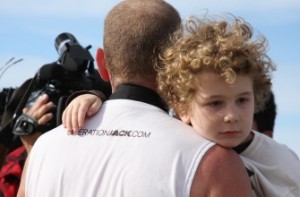
Post Footer automatically generated by Add Post Footer Plugin for wordpress.
 Like many, I was shocked by the news of Robin Williams’ unexpected death. He had an award-winning movie career; he lived in a mansion just north of the Golden Gate Bridge, and he knew he was responsible for millions of laughs worldwide for the last 35 years.
Like many, I was shocked by the news of Robin Williams’ unexpected death. He had an award-winning movie career; he lived in a mansion just north of the Golden Gate Bridge, and he knew he was responsible for millions of laughs worldwide for the last 35 years.





